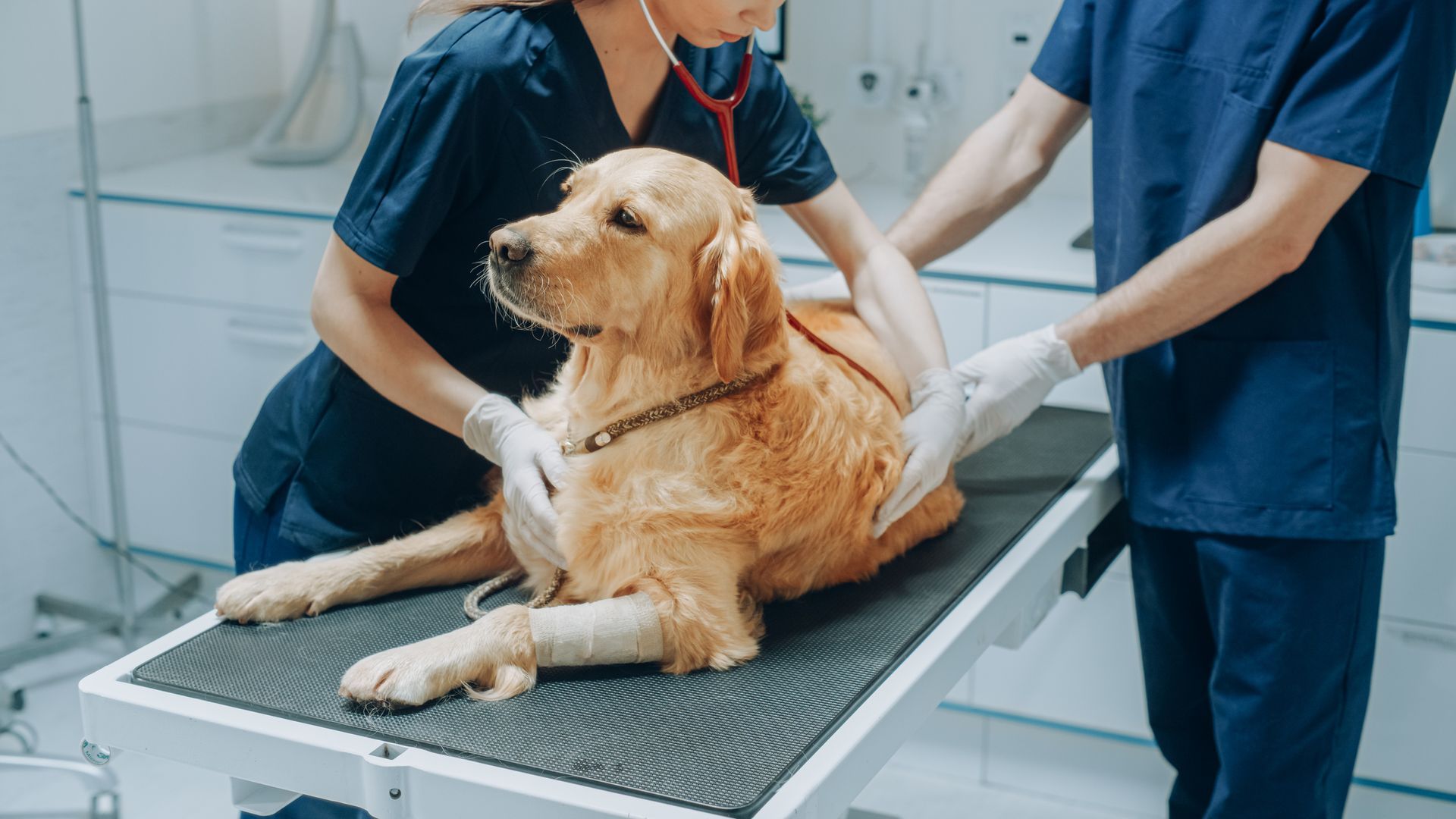ADDRESS: 4285 E Morris Blvd Morristown, Tennessee 37813
Certified by the Tennessee and Virginia Veterinary State Board of Veterinary Medicine.
CALL NOW: 423-587-4393
Canine Epilepsy: What You Need To Know
Canine Epilepsy: What You Need To Know
Canine epilepsy can be a scary thing for you and your family to witness, and of course, it can be scary for your pup too. A seizure in a pet can look different depending on the type of seizure. It can look like a shaking of the head, excessive licking, or a grand mal seizure (full body) seizure. Seizures can last for just a minute or up to several minutes. See below for more information on canine epilepsy and what you need to know.
The Causes of Epilepsy
Canine epilepsy can be caused by a number of different things. It could be because of a tumor, a head trauma, a toxin in the body, or it could just be something that happens for no specific reason. Sometimes your pup may not develop seizures until after two years of age. Your dog may outgrow these seizures, while others may experience them throughout the rest of their life.
Signs and Symptoms
Seizures look different for every dog. Some may have full body seizures while another may only have a partial seizure, meaning it only affects a part of the body. If you notice your dog having a seizure, no matter the type, be sure your dog is in a safe place.
What You Should Do
After making sure your dog is in a safe place, be certain to also clear other animals out from the room. Another dog may get fearful and bite or attack the dog having a seizure. You should also clear the room of any small children. You aren't sure exactly what your dog will do, so it is better to be safe than sorry.
Additionally, you should try and keep the room quiet. A loud noise may scare your pet and could cause him to lash out, or could even worsen the seizure. Keeping the room quiet will help ensure that your pet will feel safe and secure.
Reassure your pet that he is going to be OK. You can do this by repeating his name and telling him that he will be alright. Talking in a soothing voice is sure to help your pet feel comforted.
Keep track of how long the seizure lasts and what type of seizure he is having, such as a full body or partial seizure.
Let your dog outside after the seizure. Your dog may relieve himself while having a seizure and may expel urine or even defecate, especially during a grand mal seizure. If your dog didn't do either of these things, he may need to go out immediately afterwards.
Call your dog's veterinarian after the seizure to report the seizure. Give the office all of the information about the seizure that you noted. The veterinarian may want your dog to be seen, or may just note it in the file in the event of another seizure.
What Happens Next
Your veterinarian may want your dog to be seen for a checkup, or may have you keep records of the seizures in case another seizure happens. If your dog has recurring seizures, he may need to be placed on medication. Medication such as Phenobarbital or Kepra can help reduce the amount of seizures your pet experiences. Your dog may also need to go in for regular checkups or even blood work if the seizures worsen.
Canine seizures can be difficult to watch, but rest assured that there are things you can do to help your pup. Be sure to keep your pet calm, reassure him that he will be alright and contact your veterinarian at Appalachian Animal Hospital about the seizure immediately after it occurs. Keeping track of the seizures will help, so be sure to note when they happen, how often and how long they last.
Contact Information
PHONE: 423-587-4393
FAX: 423-587-4397
EMAIL: AAHmorristown@gmail.com
ADDRESS: 4285 E Morris Blvd Morristown, Tennessee 37813





